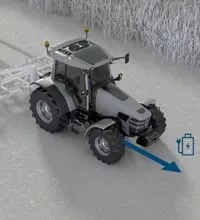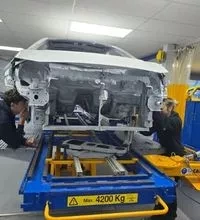Eight tips for passing your end-point assessment
In this article: End-point assessments manager at the IMI, Barry Williams, gives his best advice for preparing for your end-point assessment
1. Prepare for multiple assessment styles
First thing to remember: EPAs work differently. An EPA is a synoptic assessment of everything the apprentice has learned during their apprenticeship. The apprentice will need to be able to recall knowledge taught across the whole of the apprenticeship in a variety of assessment styles: online test, skills test, professional discussion and interview, showcase and work-based project/assignment. Not all of these methods will be used in each apprenticeship standard but, on average, three will be.
2. Find out what the main knowledge test will be
The knowledge gained during an apprenticeship will be continually checked and reaffirmed, in a variety of ways. Come EPA time, it’s important to consider the format of the main knowledge test. If it’s an online multiple choice test, why not start building your own ongoing multiple choice tests? Each time you set one, include the last block of knowledge that’s been taught. Don’t forget to include questions from all aspects you’ve taught the apprentice.
3. Keep apprentices on their toes
Consider having a variety of tests to keep the questions less predictable and cover a greater range of knowledge. The IMI has lots of theory-based question papers you can use to help build your tests and check level comparability.
4. Use the free practice resources
There’s a free EPA online practice test that you can use when your apprentice nears the end of their apprenticeship. This is available through their student membership account.
5. Do some mock assessments
Make sure you set these up to reflect the conditions that an EPA is carried out under. Try using someone as the assessor that the apprentice isn’t familiar with, as they won’t have met their EPA assessor before.
6. Carry out extra workshop sessions
Doing this will ensure your apprentices are comfortable with all the workshop tools. On the day of the EPA an apprentice has enough to think about and won’t need the extra burden of worrying about how a piece of equipment works.
7. Prepare apprentices for the discussion bit specifically
The professional discussion and interview are centred around evidence or work the apprentice has submitted and their workplace behaviour. The key to good professional discussions and interviews is knowing what is expected. The assessor will explain the process before the apprentice gets into the discussion or interview. The majority of the talking needs to be done by the apprentice, as this part of the assessment is focused on their work. They should aim to be talking for 75% to 80% of the time, with the assessor accounting for 20% to 25%. To prepare your apprentice, try bringing in someone to have a one-to-one discussion or interview with them. Make sure both parties have information about the discussion prior to the event.
8. Get apprentices talking about the right things
Encourage your apprentice to talk about health and safety, vehicle protection and best practice. If they have spoken with a customer, ask them to explain what happened and what was said. Make sure they don’t forget to explain how they finished the job and left the vehicle in a condition the customer would expect to find it in. And direct them towards the student membership pages for hints and tips on holding professional discussions.
This is an edited extract from IMI's new MotorPro magazine, received free as part of IMI membership. Time to find out more about becoming a member of the most influential community in UK automotive…?




